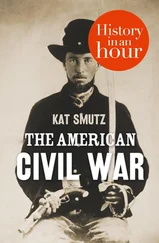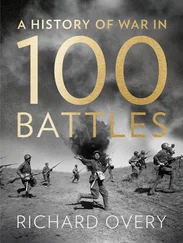In this trial of wills, Octavian understood that Antony’s expeditionary force could only decline in fighting power as it struggled to find food and fodder locally and to cope with camp diseases. There were defections to Octavian as morale declined. Antony’s decision to base himself at Actium had been a mistake, but Octavian exploited this misjudgement to the full by avoiding a pitched battle and relying on attrition. Unable to bring his strength to bear against an evasive enemy, Antony decided that his only option was to try to break out of the Gulf and fight his way through Agrippa’s blockade. He concealed his intention from his already demoralized army and when a strong northwest wind arrived on 2 September 31 BCE, Antony ordered his fleet, now reduced to no more than 170 vessels, out of the Gulf and into the open sea.
The four-hour battle that followed was directed by Octavian, who was aboard a small brigantine (suffering, it has been suggested, from sea-sickness), but fought by his admiral, Agrippa. The long delay and the strategy of blockade both played to Octavian’s advantage. Antony’s ships did not seek battle, but were equipped with sails and masts for a break-out. The decks of his ships were cluttered with stores and 20,000 marines, who were embarked with the fleet. His oarsmen were hungry and disease-ridden and no match now for Agrippa’s 400 faster and lighter ships, but they were forced to fight rather than flee. As Antony’s three squadrons came out of the gulf they formed into a crescent, with a fourth squadron of Cleopatra’s sixty ships behind them, prepared with full sail and carrying the treasure needed to fund the war. Agrippa was ready for them. His right squadron engaged with Mark Antony’s left at once, coming to close quarters and using marines to devastate and board the enemy vessels.
As Mark Antony’s right tried to manoeuvre around Agrippa’s fleet, the latter moved his ships further north to envelop the enemy, until the two wings became separated from the rest of the battle. As the centre opened up, Cleopatra seized her moment to sail between the two fighting wings out into the open sea. Mark Antony and some of his vessels on the right then followed them, but sensing that his flagship was too slow, he transferred to a lighter and faster vessel and caught up with Cleopatra, leaving his fleet and his army to their fate.
That fate was harsh indeed. At least two-thirds of the fleet was captured after several hours of fierce fighting and perhaps 10,000 men killed, some of them, according to ancient accounts, ‘mangled by sea monsters’. Much of the army came over to Octavian and those who fled the scene surrendered not long after in Macedonia. The victory at Actium owed something to the mistakes of Antony and Cleopatra, but much to the strategic understanding of Octavian, who, though he lacked the hero’s touch, understood that a battle could be won by patient waiting and the fruits of calculated attrition. The following year, Octavian pursued Antony and Cleopatra to Egypt, captured Alexandria and shared its treasures with his army. Mark Antony stabbed himself and perished in Cleopatra’s arms; she died nine days later once it was clear no deal could be struck with Octavian, reputedly from the bites of twin asps. Gaius Octavianus returned in triumph to Rome in 29 BCE and was declared ‘Augustus’ by the Senate two years later, de facto ruler of the Roman Empire. A holiday was proclaimed to mark the victory in Egypt, still celebrated in Italy two millennia later as ‘Ferragosto’.
4. BATTLE OF THE MILVIAN BRIDGE
28 October 312
The battle between two rival emperors outside the gates of Rome in 312 CE was memorable not so much for what happened on the battlefield between two opponents steeped in Roman fighting traditions, but because Constantine, who had come to capture Rome, was supposed not long before the battle to have had a vision of the Christian cross in the sky with the inscription ‘by this win’, and a dream in which Jesus told him to use the symbol of Christ (the Greek letters ‘chi-rho’). It is claimed that Constantine, buoyed up by this apparition, led his army to a certain victory over the pagan Maxentius and opened the way to Europe’s Christian age. At the Milvian Bridge, God was on the side of the victor. Constantine was a leader on a divine mission.
The Roman Empire in the early fourth century was ruled by a ‘tetrarchy’ of four emperors, each ruling over a defined imperial territory. At York in 306, Constantine was declared ruler of the northern provinces of the empire, which covered present-day Britain, France (Gaul), Belgium and western Germany. That same year, the young Maxentius usurped the imperial title in Rome. A year later, one of the four emperors, Galerius, attempted to overthrow the usurper, but without success. Then in 312, Constantine, a popular ruler in contrast to the brutal and untrustworthy Maxentius, marched across the Alps at Susa to try his luck at capturing Rome, still regarded as the centre of the empire. His army captured Turin and Milan, won a battle at Brescia, then laid siege to Verona, where it defeated Maxentius’s leading general as he tried to flee. From a small force, Constantine’s army was augmented by deserters from Maxentius’s cause. He marched south towards Rome, mustering an estimated 50,000 men.
To oppose him, Maxentius had perhaps 100,000 men to call on, though many were less well-trained than those of his opponent, raised from levies forced on a reluctant population. He gathered stores of wheat and supplies to withstand a siege, as he had done successfully with Galerius. To hold up Constantine’s advance, he ordered the destruction of the wide stone Milvian Bridge across the Tiber, which lay on the path of his enemy’s army. But at the last moment he changed his mind and decided that his forces were large enough to secure a land victory. A new pontoon bridge was constructed, and Maxentius led his large army across it to Saxa Rubra. At the core were the famous Praetorian Guards (the elite imperial bodyguard), and on the flanks were the new heavy cavalry modelled on the Persian example. Opposed to them was a conventional force of Roman infantry supported to either side by experienced horsemen. Constantine’s forces, so it is said, were told to paint the ‘chi-rho’ sign on their shields to show that they were protected by the new Christian God. They marched into battle inspired by Constantine’s vision and the certainty of victory.
Victory was in fact far from certain, since Maxentius had the much larger force, but Constantine, in imitation of Alexander the Great, led his seasoned cavalry in a determined charge against the horsemen on the flanks of Maxentius’s army. Little is known in detail about the battle, and what is recorded comes from a later account by the Christian bishop Eusebius, based on conversations with Constantine, and cannot be regarded as reliable. However, the outcome is known with certainty. Constantine’s cavalry smashed their opponents and drove them back to the Tiber. The infantry lines of Maxentius were exposed to flank attacks and the line caved in. Panicking soldiers fled to the pontoon bridge or tried to cross the river, while the Praetorian Guard held its ground and was cut down rank by rank where it stood. Whether the pontoon bridge collapsed or the unruly crowd surging across it pushed others into the water, the fleeing Maxentius ended up drowned in the Tiber, weighed down by his armour. His body was dredged out and decapitated, and his head displayed on a lance as Constantine marched on into the city.
The extent to which Constantine’s army fought and won because of his vision is open to debate. His forces won notable military successes in northern Italy without the aid of divine inspiration, but with an astute and experienced commander to guide them. It is not clear how Constantine himself interpreted his vision, since he had previously claimed to see visions of pagan gods, particularly Apollo. After his capture of Rome, which left him as unchallenged ruler of the western part of the empire, he admitted to many subsequent visions of Jesus. Modern accounts suggest a possible atmospheric phenomenon which Constantine interpreted as he wished, but since he claimed to have had visions often, he may have been the victim of hallucinations caused, experts now think, by a particular form of migraine. Whatever the truth, Constantine knew how to use the vision to his advantage; in this case it must have reinforced the confidence of his men in a leader who had already proved his qualities on numerous occasions. There are times in battle when a perceptive leader can see how the supernatural might help, as Alexander had at Gaugamela.
Читать дальше












